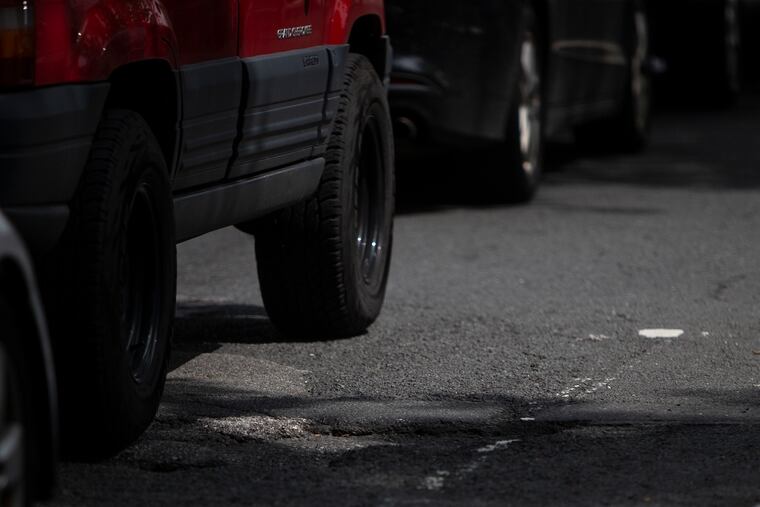Potholes shouldn’t be forever | Editorial
Recent data about potholes and repaving are revealing. But do they tell us what we need to know to get ahead of Philly's endemic paving problems?

In a city where heated debates about cheesesteaks are too many to tabulate and unlikely to be resolved in the near or far future, we at least can agree that Philly potholes are not merely a problem, but a plague -- as anyone who lives, walks, rides, or drives anywhere in Philadelphia knows all too well.
It may be difficult to believe, especially if you or your car’s alignment has been bent out of shape recently, but the city’s Streets Department does seem to be making an effort. The Inquirer’s Jason Laughlin reports that between 2013 and 2018, crews filled potholes along the nearly 3½-mile length of Ogontz Avenue 4,866 times. And Ogontz is only the fifth-worst street in town, according to an analysis of conditions, including but not limited to potholes, made by the city Controller’s Office. The Controller’s Office recent release of an abundance of data about potholes, repairs, and repaving on Philly’s streets was created with cooperation of the Streets Department.
The worst street in town? South Swanson Street in South Philly.
No Center City thoroughfares made the 10 worst — a fact likely to surprise those attempting to navigate, say, 15th Street between Market and Spruce lately, and six of the worst are in the Northwest Philly. But severely pothole-pocked streets are found in a variety of neighborhoods, a scant bit of comfort that suggests a rather random pattern of pavement deterioration.
The report also pointed to a chronic shortage of dollars holding the city back from repaving 131 miles of streets annually —this is described as an ideal figure for a city with about 2,200 miles of municipal thoroughfares. The analysis also points to a particular funding issue involving a significant number of highly traveled streets, including Ogontz and most of the others among the 10 worst.
A federal grant program pays 80 percent of the cost of repaving (but not pothole-patching) on 306 miles of city streets designated as heavily traveled. Philly officials describe the application process as onerous and slow, so slow that only less than a quarter of these streets have been repaved in the last six years.
It’s worth noting that some of the bumps, dips, and other pavement disruptions are related to damage or repairs from subterranean infrastructure. Sinkholes, like the one that a SEPTA bus got stuck in on Chestnut Street near 17th in May, or the one that recently opened near 43rd and Baltimore in West Philly, result from subterranean leaks, erosion, or other issues. And last July, a 48-inch main on Sansom Street east of Broad failed and flooded the surrounding commercial blocks with 14 million gallons of water. The $1.7 million repair job was finished, and streets completely reopened, last Friday.
A top-to-bottom assessment of the condition of the street network, perhaps utilizing ground-penetrating radar or other imaging technology and including utilities infrastructure, would be useful, as would a standardized paving assessment that doesn’t rely as heavily on visual inspections.
Because so far, the data and the analyses only tell us what we already know all too well.